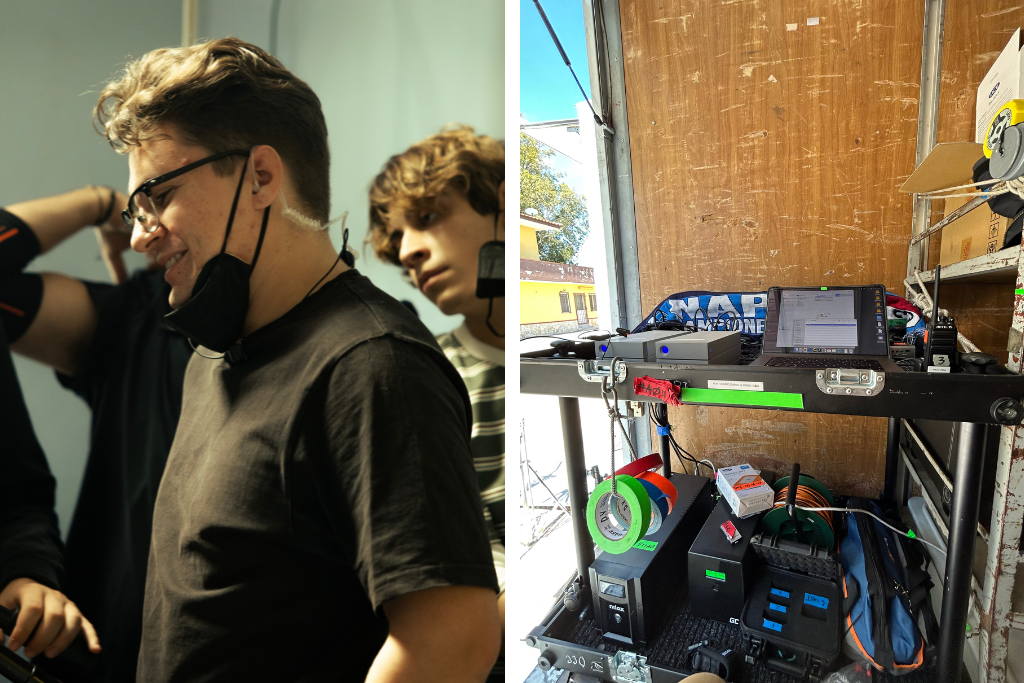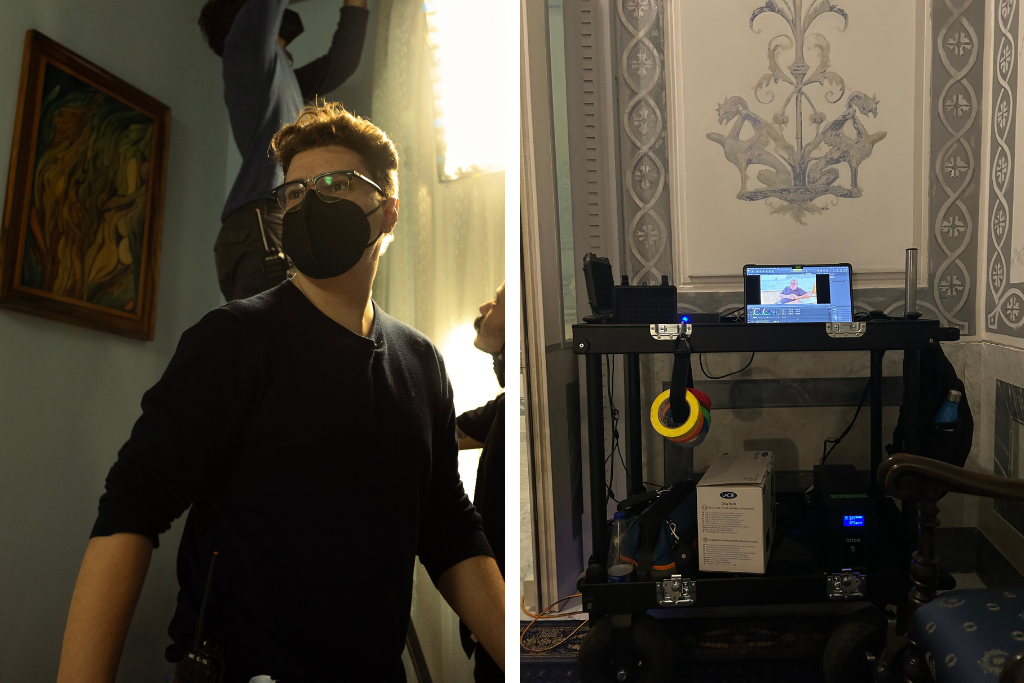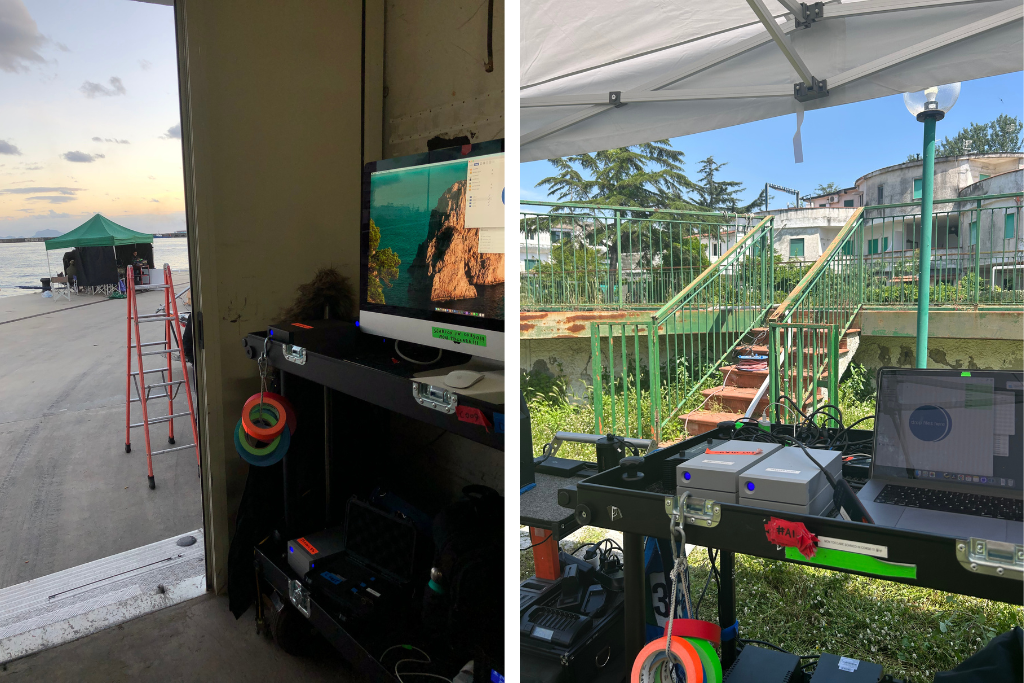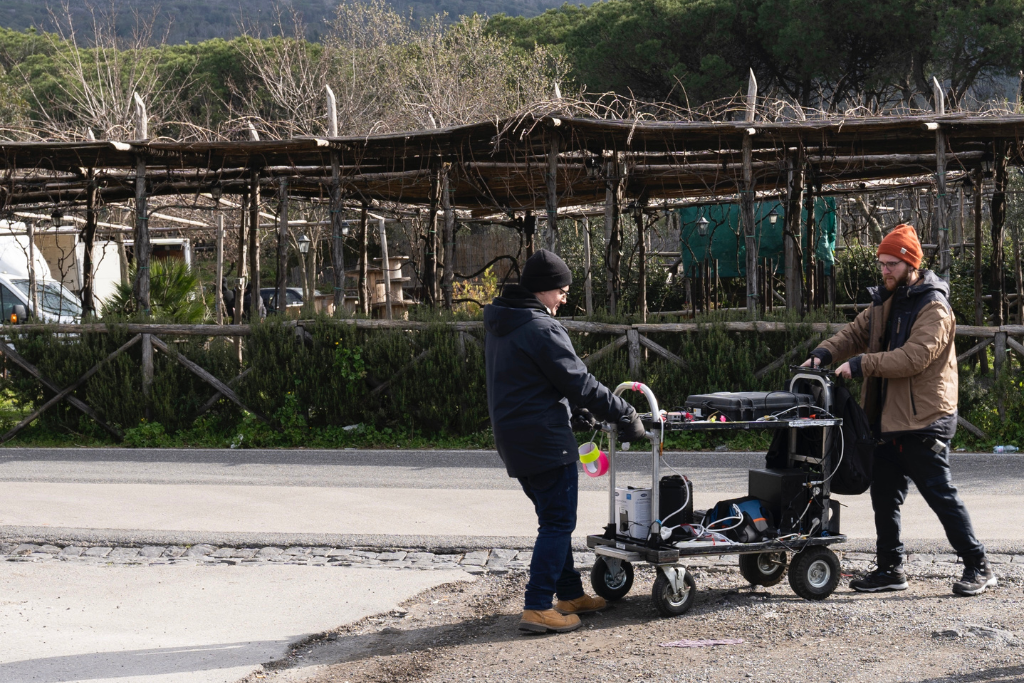
Hello Diego, welcome to our Data Expert Series, it’s a pleasure to have you here with us. I’m really looking forward to hearing about your experiences as both a data wrangler and a DIT, but before we get into that, could you tell me a bit about yourself and what led you to this role?
Diego: It’s a pleasure to be here. My name is Diego Vitale, a 23-year-old from Naples, Italy, and ever since I was a little boy I wanted to be part of this industry. It’s kinda corny, I know, but I knew from a very young age what I wanted to do. Everything started when, with a group of friends, in my early teen years, I started making short films. We were very young and we wanted to be a part of the “cinema industry”. Over the years, our projects became more complex, and eventually, we started receiving calls from bigger productions. Then I started working on small productions as a Data Wrangler and, step by step, people began to trust me, leading to more opportunities on other bigger projects. Lately, I have been able to work on small projects as a DIT.
That’s wonderful, not only that you had that dream and were able to accomplish it, but more importantly that you were able to do it with that same group of friends. Now that you’re starting to work as a DIT, what types of productions are you involved in?
Diego: I typically work on fiction films, TV series, and documentaries. The workflow between fiction films and TV series is usually quite similar, with the main difference being the number of cameras used and the adoption of a different data storage workflow that depends on the host of the series. However, when it comes to documentaries, the workflow is completely different due to the need to capture footage from multiple cameras or devices, often with long and highly significant shots that need to be offloaded as soon as possible.

Diego on set & his cart
Very interesting. So with the vast different between the two types, do you prefer one over the other?
Diego: I much prefer working on TV series because it fosters a beautiful bond with colleagues and provides an opportunity to spend time (if you’re lucky) with your team. Moreover, it allows you to make a greater contribution to the project, especially if you hold other roles such as a DIT.
Makes sense, and that provides a great segue into my next question about your workstation set-up. The role of a DIT can vastly vary based on the individual and the production they are working on, which is a main reason why I find it so interesting hearing about everyone’s preferences. Could you fill us in on yours?
Diego: Sure, so typically, the majority of film productions work with two cameras. I optimize my workflow by bringing along two AngleBird C-fast readers, depending on the camera I’m using, such as the Alexa Mini. In the case of productions with bigger cameras like Venice or Arri’s newest cameras that use proprietary SSDs, I request a card reader for each machine from the rental company. This is helpful in order to have two supports so I always have a backup on each and to facilitate offloading. I prefer working with two RAID masters and using an SSD as a shuttle. I connect all these devices to the CalDigit Thunderbolt 4 dock. To offload the files, I use a MacBook Pro M1 16” and Shotput. All these devices are powered by my 3000VA UPS. I utilize an upgraded Filmcart Smartone Upgraded, to which I have added various supports, including an arm for mounting a VESA monitor. To preserve both used and unwritten media, I use two waterproof and color-coded cases to easily differentiate between the drives. Additionally, my trusty label maker serves as my best friend, allowing me to label the drives.

Diego’s cart on set in multiple locations
Sounds like a great set-up. And for those that may just be starting out in the role or are even just thinking about making the transition, do you have any pieces of equipment that you consider absolutely essential?
Diego: I would advise those who are starting out not to immediately invest a large capital, but to invest it wisely in necessary equipment. For example, a reliable uninterruptible power supply (UPS) is crucial. There are various options available that are reasonably priced and they allow you to protect ongoing data transfers from voltage fluctuations (which are quite common on set) or to continue working and secure your files during prolonged power outages. Furthermore, a high-quality Thunderbolt dock enables you to maintain drive speed and complete your work more efficiently. Sometimes, a poor connection or non-Thunderbolt cables can slow down your workflow. If you are working solely as a data manager, initially invest in a Mac with Thunderbolt ports, not necessarily the latest top-of-the-line model. If you don’t need to transcode, set aside your money and purchase it once your business expands. A good film cart is a worthwhile investment for the future. If you don’t require much storage or specific accessories, you can start with a basic Filmcart (perhaps using the money saved from the previous Mac purchase). They are like cars, and if you take good care of them, they can last for years and be adapted to your DIT workflow. It’s important to have your own bag on set with Torx screwdrivers and various accessories. They may come in handy, just like “PRO-GAFF CLOTH TAPE” which is essential for labeling your media.
Awesome suggestions… so going along with my last question, do you have tips related to the role?
Diego: I believe that even at a young age, I have always had a strong work ethic. I take my work seriously and remain focused on my goals. One valuable piece of advice I would give to young filmmakers like me is to practice active listening. While it may seem strict, I have found that truly listening to others is a highly underrated skill. People appreciate being heard, and it has served me well over the years. However, I also acknowledge that I have much to learn due to my young age. In this industry, “sh*t happens” and unexpected challenges may arise, but it is essential to remain calm and focused. Panicking does not benefit anyone.
Great advice, and it’s true that being able to adapt to any situation is an extremely valuable skill in this industry. Was there anywhere in particular you went to learn about this role or someone who guided you when you were first starting out?
Diego: Manuals were my bible. I like to study every new model of anything that comes out (I’m a Camera NERD). Most of my knowledge in this work was self-acquired through diligent study and curiosity. For this profession, the only way to learn is either to attend expensive schools or to understand the functioning of things and have previous skills in both photography and computer science. Furthermore, I have learned many things thanks to my mentor and a dear friend: Roberto Cavalera.
Awesome. So Just a few last questions for you… any on-set stories you’d like to share?
Diego: Due to the nature of my profession, I often find myself in remote corners of locations (if I’m lucky). One time, I was almost forgotten in a museum room where I was downloading the files! Luckily, they remembered that I was still inside at the last minute.
On the contrary, a distressing encounter, in which I was “rescued” by Shotput, took place during a small-scale production where stress levels were soaring, thus hindering a harmonious work environment. Due to a camera malfunction, the 1stAC failed to record the clip, and no one took notice of this oversight, as the 1stAC command was set to “rec” mode but was never flagged. A week later, I received a call from the lab informing me that these files had never been downloaded and that I had downloaded them incorrectly. However, with the aid of Shotput’s data reports and its meticulous verification process, I was able to assert that the blame did not lie with me.

Transporting his cart
Glad we were able to swoop in and save your day! Anything else you’d like to share that I didn’t ask in my previous questions?
Diego: Our profession is often underestimated by film productions, and the role of a data manager is not only limited to offloading and securing files, but also involves problem-solving to maintain the set workflow. It is crucial to bear this in mind before embarking on this career. I would like to express my gratitude to Imagine for providing me with the opportunity to share and shed light on our profession, which often goes unnoticed by others.
Yes it does, that is the biggest reason we were so excited to do this interview series, to help shed light on a role that too often goes unnoticed and underappreciated. I want to extend my thanks to you, Diego, for taking the time out of your schedule to meet with me and talk a bit about your workflow and the role. I look forward to seeing what you accomplish in the future!